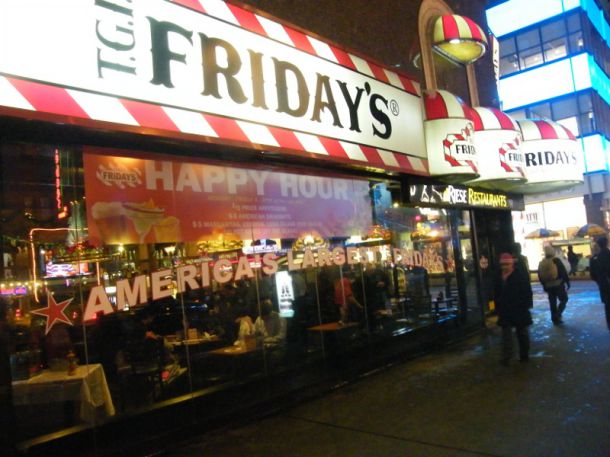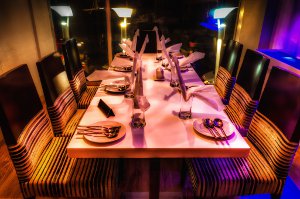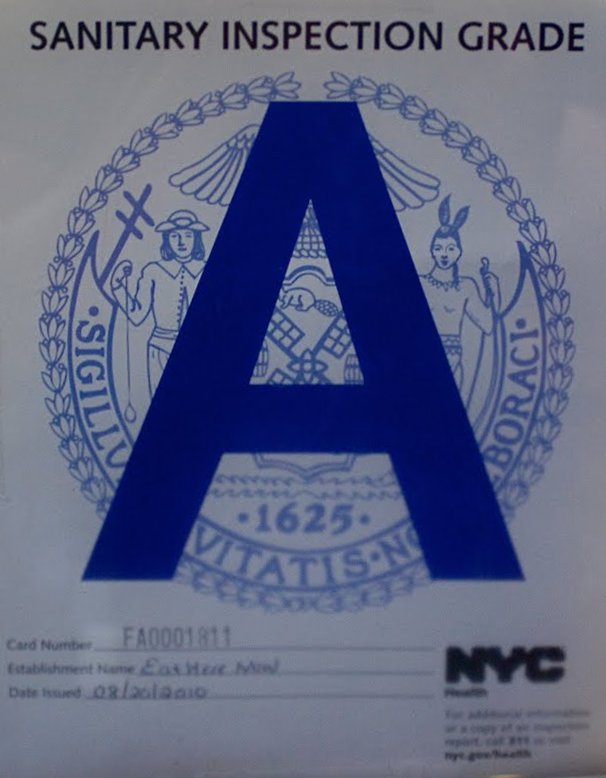
While New York City is known for many things, perhaps most notable is the amazing food and incredible restaurant scene found in any neighborhood. One can find a huge variety of cuisine in New York City, from fine French dining to your local Indian spot – but though you may find familiar food, the experience may be different than you are used to. This guide highlights some of the primary things to know about dining in New York City so that you get to eat where you want without any difficulties.
Where should we eat tonight?
With so many different restaurants to pick from, it can be quite intimidating to select one from the many options, especially when you are new to the New York City restaurant scene. Luckily, there are a number of tools in place to help pinpoint the restaurant that is best for you based on: what price you would like to pay, which restaurants are closest to you, and which are the best rated for a particular type of cuisine.A tried at true favorite are Zagat ratings, which are released and updated annually. This is the predominant guide based on customer surveys and is still a significant reference for New Yorkers. Restaurants will proudly display write-ups and reviews they have gotten from Zagat over the years and many New Yorkers still use it as their restaurant bible. The guides highlight the restaurant atmosphere, give its price range and location, as well as give a few recommendations on certain dishes. The highest Zagat rating that customers can give an establishment is 30.Another popular source for restaurant critiques are online review sites. The online review community has grown immensely over the last 10 years and is entirely user-created. Some great examples of review sites include Yelp and TripAdvisor. Members of these sites review the restaurant and highlight things that were enjoyable or annoying about their dining experience. Generally speaking, this can be a great reference if you’re looking for reviews from people just like yourself – and they are usually pretty accurate!Another great source for information on restaurants are the publications that focus on New York City, such as New York Magazine and New York Times. These publications will feature new restaurants that have recently opened, highlight the “best of” a certain neighborhood or cuisine, and could open your eyes to dining options you didn’t know were available.
Have a Reservation?
 As you may have noticed, New York City has a lot of people. Restaurants are usually quite busy and sometimes getting a table can be a seemingly impossible task. If you’re hoping to dine at a popular restaurant on a Saturday night you should definitely make a reservation for your table well in advance or plan on dining elsewhere.While you can simply make a quick phone call to secure a table, there are a number of other systems in place that streamline the reservation process. One of the most widely used systems is OpenTable. OpenTable not only acts as a reservation system, but also as a social network and a way to review restaurants. The restaurant allows you to view timeslots that would work for your group and make the reservation online. This system also keeps records of your reservation and allows you to make special requests. As a final perk, OpenTable offers its users coupons and dining dollars for using this system as their reservation tool.On a similar note, do not be surprised if your reservation is cancelled if you either do not confirm the reservation the day of or the day before, or if you show up more than 15 minutes late for your reserved time.
As you may have noticed, New York City has a lot of people. Restaurants are usually quite busy and sometimes getting a table can be a seemingly impossible task. If you’re hoping to dine at a popular restaurant on a Saturday night you should definitely make a reservation for your table well in advance or plan on dining elsewhere.While you can simply make a quick phone call to secure a table, there are a number of other systems in place that streamline the reservation process. One of the most widely used systems is OpenTable. OpenTable not only acts as a reservation system, but also as a social network and a way to review restaurants. The restaurant allows you to view timeslots that would work for your group and make the reservation online. This system also keeps records of your reservation and allows you to make special requests. As a final perk, OpenTable offers its users coupons and dining dollars for using this system as their reservation tool.On a similar note, do not be surprised if your reservation is cancelled if you either do not confirm the reservation the day of or the day before, or if you show up more than 15 minutes late for your reserved time.
The Health Department
 The Health Department is responsible for checking in on restaurants to make sure that they are operating up to health standards and not conducting any illegal practices as food or beverage suppliers. There are a number of standards that must be kept, including food temperatures, the storing of glassware and plates, and the overall cleanliness of the restaurant among others. Unlike other cities, New York City requires that restaurants publicly display how well they scored with a letter grade. Restaurants that scored well will display “A” grades, while “B” and “C” grades mean that they needed improvement in areas that affect the cleanliness of the food. These include evidence of rodents, insects, or problems with personal hygiene. Generally speaking, you should try to stick to “A” grades; “B” and “C” restaurants may have serious violations that could leave your food unsafe to eat.
The Health Department is responsible for checking in on restaurants to make sure that they are operating up to health standards and not conducting any illegal practices as food or beverage suppliers. There are a number of standards that must be kept, including food temperatures, the storing of glassware and plates, and the overall cleanliness of the restaurant among others. Unlike other cities, New York City requires that restaurants publicly display how well they scored with a letter grade. Restaurants that scored well will display “A” grades, while “B” and “C” grades mean that they needed improvement in areas that affect the cleanliness of the food. These include evidence of rodents, insects, or problems with personal hygiene. Generally speaking, you should try to stick to “A” grades; “B” and “C” restaurants may have serious violations that could leave your food unsafe to eat.
Here’s a Tip
If you are at the bar, you should plan on leaving $1-$2 per drink or up to 20% if they are making you a specialty cocktail. Experience tells us that if you take care of your bartender or server, they are going to take care of you in more ways than you may expect – be it with a dessert on the house or a free drink for your courtesy.If you fail to tip correctly, you never know the outcome. It’s not uncommon in New York for servers or bartenders to approach you to ask you why you did not tip correctly. Unless there was something horribly wrong with the service, you will appear very cheap in front of your guests and the situation can become quite embarrassing. To avoid this, it is best tip correctly rather than deal with a potentially awkward situation afterward. Here is a complete guide to tipping in NYC.
New York Dining Etiquette
When entering a restaurant you should wait until the restaurant host greets you and directs you to a table. Even if you see a table you would like or think you know at which table you will be seated, it is considered rude to seat yourself. If you would like a specific table, you can always ask the host to be seated there.Wait until everyone is served his or her food before you start eating. It is considered bad manners to start before everyone has a plate in front of them. Some other things that are considered rude are talking on the phone, texting, or checking your email while at the table. If you must take a call, you should excuse yourself even if you are just with friends. You should also never, ever smoke at a dining establishment in NYC, even if you are seated outside. Not only is smoking considered rude but it is also against New York law in any indoor or outdoor dining establishment.Note that in New York City, tables hold a high value on busy nights and you may be given a time limit for how long you are allowed to sit at your table. This may seem odd given that you are a paying customer, but restaurants must be able to use these tables for other clients in order to stay afloat in this extremely competitive marketplace. After your dessert, be prepared to pay your bill and leave the table. If you feel like staying, moving to the bar area after your meal is the New York way to dine out.New York’s dining scene can be an extremely enjoyable part of living in NYC. With some of the highest rated chefs and restaurants in the world residing in New York City, you should always expect the best. These basic guidelines will make the restaurant scene easier to navigate and enjoy while also avoiding any awkward situations.Article updated November 25, 2014

